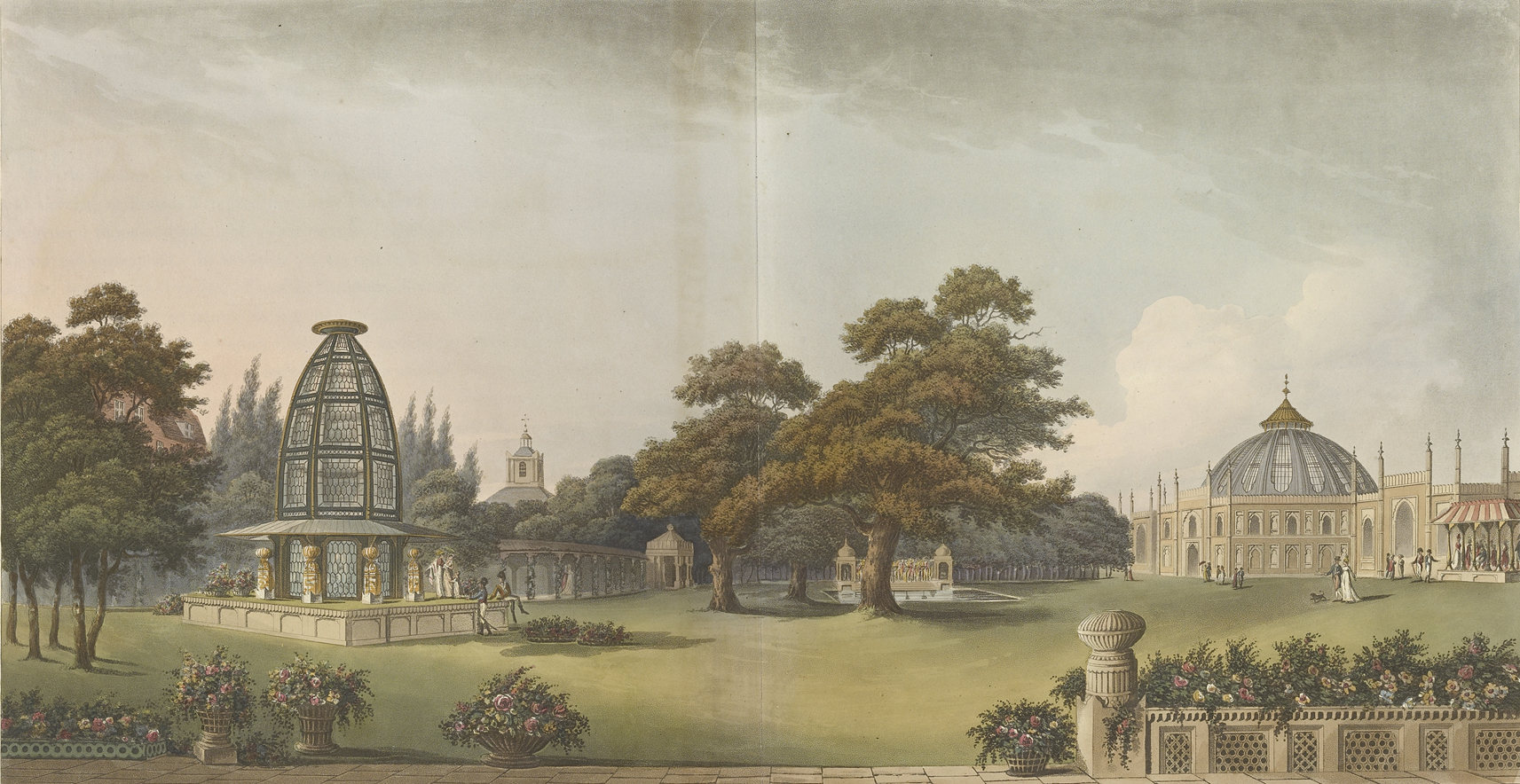Content

Humphry Repton, a Leading Landscape Designer of the Romantic Movement

Joseph Constantine Stadler (active 1780–1812) after Humphry Repton (1752–1818). The General View from the Pavillon, folding aquatint in Repton’s Designs for the Pavillon at Brighton. London: Printed for J. C. Stadler and sold by Boydell and Co., etc., 1808. Bequest of Julia P. Wightman, 1994; PML 152316
Humphrey Repton, 1752-1818, was an English landscape designer of the Romantic Movement. The Morgan Library and Museum in New York City has a lovely resource online that depicts his work, particularly how Repton marketed his landscape expertise with the use of “Red Books” two of which were shown in an exhibit, “Romantic Gardens: Nature, Art and Landscape Design” at the Library last year.
Repton was a leading landscape designer of his time. “He developed a technique of showing before-and-after views of picturesque scenery so that his readers could see at a glance what he expected to accomplish,” as noted by the Library’s Curator, John Bidwell. The online exhibit shows the “Red Books” covered with Morocco leather. Repton wanted estate owners to “respect the genius of the place”, the natural beauty of the terrain. The interest in Romantic painting at the time influenced his drawings. There are several short videos of Repton done by Bidwell who notes that “William Gilpin, author of illustrated travel books, extolled the beauty of picturesque scenery,” which also influenced Repton.
Repton’s “Red Book” on Hatchlands in Surry, England, 1800, suggests to the owner “to remove trees for a scenic prospect. Repkin’s “after” picture includes an orangerie “for a visual enhancement,” John Bidwell notes. For a more in depth study of Humphrey Repton’s work and his influence on the work of Frederick Law Olmsted’s and Calvert Vaux’s vision in the design of Central Park, New York, visit the following link:
http://www.themorgan.org/collections/works/repton/default.asp

